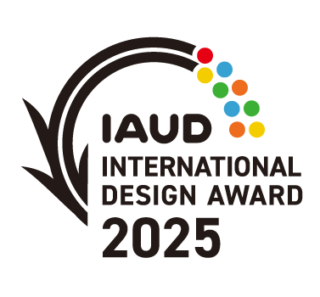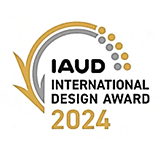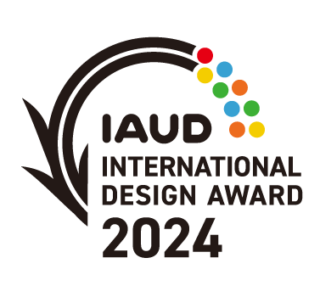IAUD International Design Award Citations 2020 CHAIR'S INTRODUCTION & FULL CITATIONS
2020.12.18 Updated
CHAIRMAN’S INTRODUCTION
The Chair of IAUD International Design Award 2020 Selection Committee
Professor Emeritus, Royal College of Art, UK
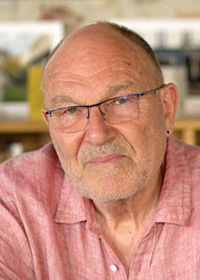
This year we celebrate the 10th edition of the IAUD International Design Awards.
Over the past 30 years Universal and Inclusive Design have enjoyed great success. Small local initiatives have grown into an international and transformational approach unlocking the power of design to successfully address the fundamental social issues and challenges of disability, population aging, racial exclusion and discrimination in all its forms.
But, while these successes give cause for hope, I have serious concerns for the future, faced as we are by multiple challenges to world peace, and to our health and environment. The Internet and information technology have brought great benefits, but are also fostering social discord and undermining past certainties. Covid-19 is still with us bringing recession in its wake and a bigger threat is looming. Human-driven climate change and the accumulating plastic debris embedding itself in global food chains are part of the fall-out from the belief in continual growth that underlies our consumer societies. And in the face of an urgent need for economic recovery as the pandemic recedes, important values are likely to be sacrificed, in particular the welfare of our small planet and the global envelope we share and mutually depend on with all other living things: the biosphere.
In Universal Inclusive Design, and in particular the Japanese expression of it, we have a solid foundation for a more equitable and collaborative future, but where we go next will be crucial. Confronting these challenges will not be easy, but if we stand by our guiding principle of supporting all those who are socially vulnerable, we can succeed. In a short space of time, here in Japan, Universal Design has demonstrated that social challenges can be powerful drivers for innovation. In particular by enabling and integrating large numbers of previously excluded people as active social participants and economic contributors. These social gains must remain our foremost goal, while the proven benefits to business are but one factor in a virtuous circle that has changed countless lives for the better.
This was the founding vision of our late lamented patron HRH Prince Tomohito, and I have no doubt that were he still with us he would urge us to expand our human-centered design practice to ensure the wellbeing of the planet and its biosphere. That Japan should be a natural leader in this endeavor was summed up in 2010 by Kazuo Toda, ex Vice-President of Panasonic, in his words of greeting to the participants at the IAUD International Conference in Hamamatsu:
“The concept of universal design is an important part of the identity of the Japanese. A unique spirit of considerateness and attentiveness has lived in the Japanese since ancient times. This, I believe, is the starting point for the Japanese attitude towards universal design, and that spirit has its inception in a lifestyle that involves living in harmony with nature, and in human relationships that arise from collaborative work…”
I see great hope in what has been achieved in Japan through this remarkable initiative of Prince Tomohito’s which is IAUD and in particular the International Design Awards Program. It deserves to be far better known outside Japan and I urge IAUD to ensure that happens in the near future. The many Grand, Gold and Silver Award winning projects of the past are testimony to this achievement and in 2020 we again add to that body of outstanding exemplars of Universal Inclusive Design.
CITATIONS for GRAND AWARDS (1)
CITATIONS for GOLD AWARDS (9)
CITATIONS for SILVER AWARDS (19)
CITATIONS for BRONZE AWARDS (35)
Announcement of IAUD International Design Award 2020 Winners
JUDGING CRITERIA
The past ten years of the awards have seen sustained progress, and to maintain this momentum the Judging Panel is looking for entries that:
- Push the boundaries of Universal Design in new and exciting directions.
- Prioritize high-quality user-based research, in particular direct engagement with disabled users and others at risk of being excluded from the market.
- Consciously avoid exclusivity arising from innovations and new technologies, in particular for specific groups of users.
- Go beyond conventional ‘usability’ by identifying specific problems relating to diverse groups of users and delivering solutions to them.
- Demonstrate long-term corporate commitment to UD, supported by a company-wide vision and plan to ensure continuing improvement.
- Are supported by honest and informative promotional material.
Essential Goals of the IAUD International Design Awards Program
- Sustainable and Universal: The entry presents concepts and practices suitable for creating a sustainable, mutualistic society.
- Diversity and Inclusion: The entry shows an understanding of the diversity of traditions, cultures, lifestyles and people, and does not exclude minorities but rather expressly includes them; and thus contributes to realizing a qualitatively rich and happy way of life.
- Safe and Secure Society: The entry contributes to the construction of mechanisms, systems and morals appropriate to a society that protects human rights and respects the humanity of every individual.
- Spontaneous and Sustainable Dialogue: The entry serves to build ongoing exchanges and relationships between corporations, design practioners and clients, government, research institutions, NPOs, and citizens.
- Passing-on of Knowledge and Skills to the Next Generation: Through disseminating universal design and knowledge about it, the entry serves to cultivate individuals suited to lead the next generation.
IAUD International Design Award 2020 Selection Committee
- The Chair of the Selection Committee: Roger Coleman (Professor Emeritus of the Royal College of Art, UK)
- Co-chair of the Selection Committee: Fumikazu Masuda (President, open house inc./ Visiting Professor, Nagoya University of Arts and Sciences, Japan)
- The Members of the Selection Committee:
- Francesc Aragall (President, Design for All Foundation, Spain)
- Toshiharu Arai (Professor Emeritus, Kanazawa College of Art, Japan)
- Thomas Bade (CEO, Institute for Universal Design, Germany)
- Onny Eikhaug (President, EIDD Design for All Europe, Norway)
- Valerie Fletcher (Executive Director, Institute for Human-Centered Design, USA)
- Rama Gheerawo (Director, Helen Hamlyn Centre for Design, Royal College of Art, UK)
- Keiji Kawahara (Professor, Graduate School of Media and Design / Department of Design, School of Media and Design, Nagoya University of Arts and Sciences / Executive Director, IAUD, Japan)
About SDGs
"Inclusivity", the basic philosophy of Universal Design, is essentially the same as the principle of the SDGs, "No one should be left behind." Therefore, it can be said that UD and SDGs are linked. In order to make this easier to understand, we display the relevant goals of the SDGs with each award-winning work.
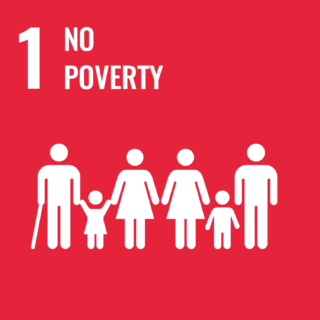
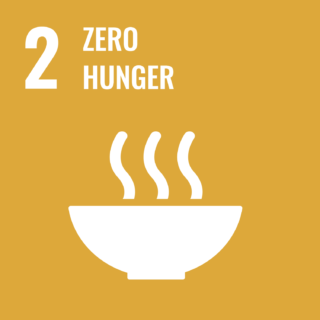
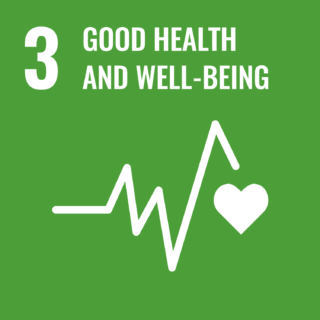
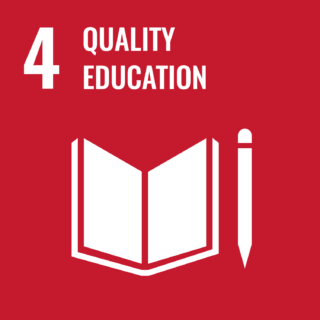
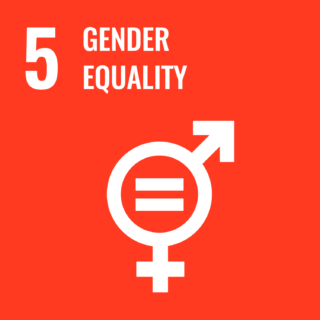
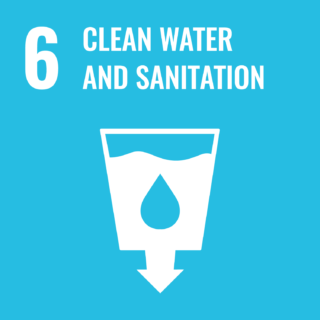
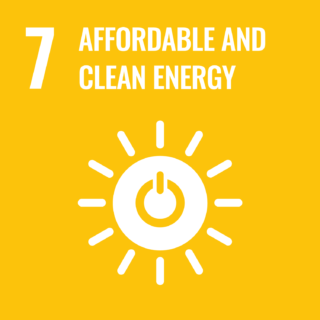
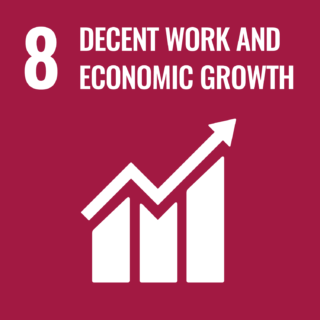
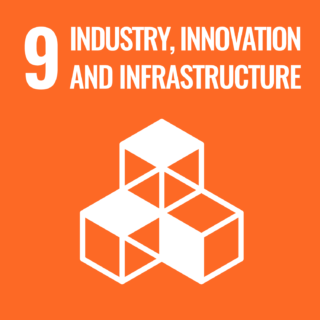
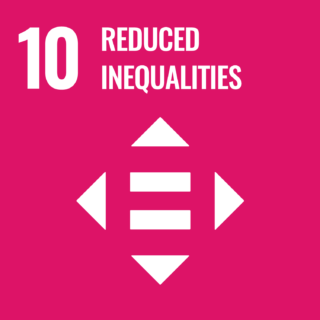
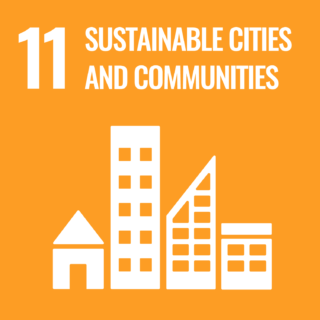
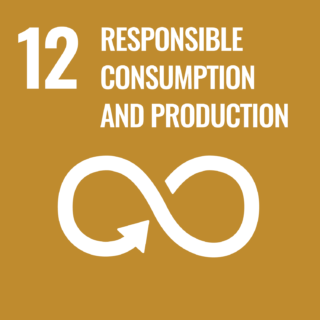
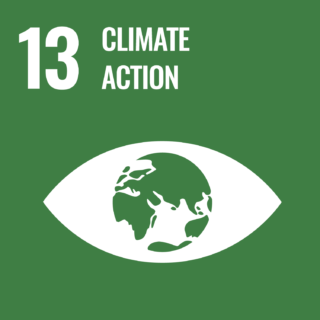
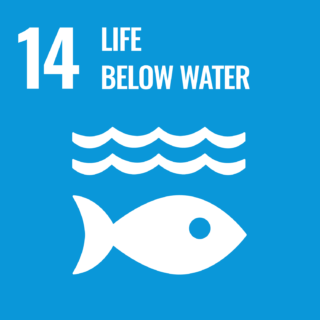
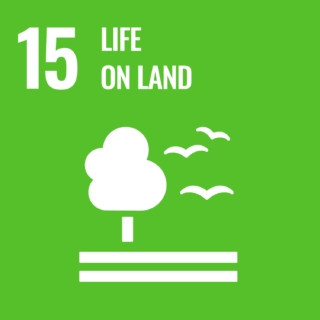
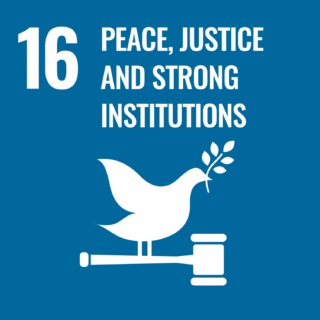
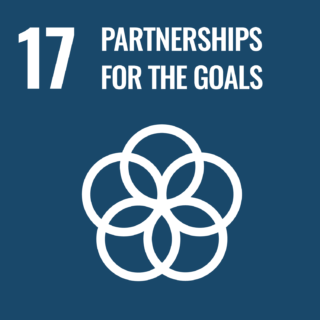
GRAND AWARD 2020
- In the category of Public Space Design
- Gallagher & Associates and Centre Screen receive a joint Grand Award for:
United States Olympic & Paralympic Museum (USOPM)
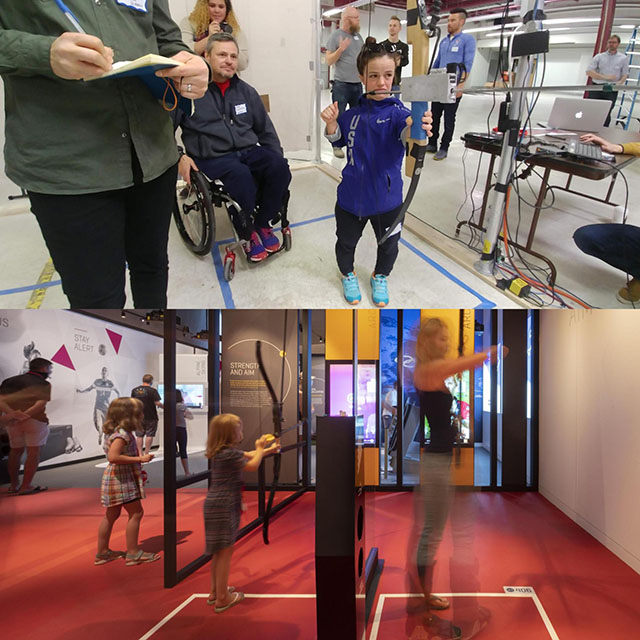
The United States Olympic & Paralympic Museum opened on the 30th of July 2020 in Colorado Springs Colorado. Here, Paralympians and Olympians share equal billing in an interactive museum offering a truly inclusive experience through its content and design.
The museum visit starts with an elevator ride to the top floor from where a ramped path leads downward to the main floor through the museum galleries. There are no steps, as accessibility and interactivity are central to the design. The exhibits raise the bar on both Universal Design and also offer a state-of-the art bespoke experience for visitors with disabilities through an innovative user-aware interface that recognises and responds to individual visitors’ requirements based on their specific needs and preferences. These settings become their personal RFID profile, instantly recognized by any media interface the visitor encounters, be it a monitor, an immersive large-scale projection, or an audio speaker.
User-engagement was central to this project, from concept to completion, including Paralympians, but not limited to these athletes whose abilities far exceed typical users with disabilities.
The jury described this project as:
A great example of museum, and especially exhibit design for all, which embodies so completely the principles of inclusive design by treating all visitors as equal while providing for individual needs in a seamless and elegant whole. Importantly, inclusivity is integrated into all exhibits, which are seamlessly linked by a fully adaptive user interface that automatically presents each exhibit according to the individual visitor’s needs and preferences. A tour de force by multiple design partners.



GOLD AWARD 2020
- In the category of Regional Planning
- The city of Borås receives a Gold Award for:
Accessible City
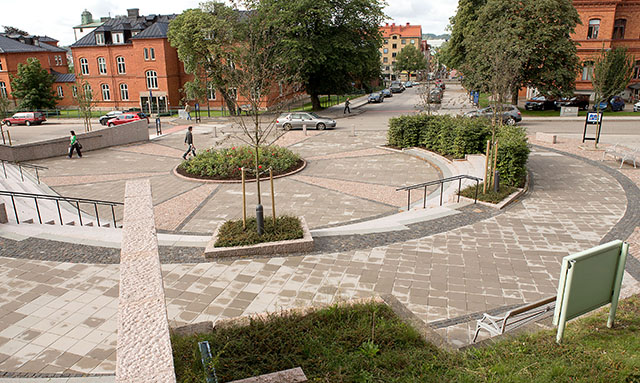
Borås is a growing city located in South Western Sweden. The goal of the municipality is to make Borås a genuinely accessible city. This has been achieved by working strategically in close collaboration with local disability organizations to establish representative advisory ‘disability councils’ ensuring that disabled citizens are heard and represented at all strategic planning and executive levels. The result is a growing range of improvements and accessibility features across the city and a long-term commitment to continuing improvement.
The jury applauded:
A clear long-term commitment at municipal level that succeeds at many levels. This, along with the active engagement of residents, has delivered results that go significantly beyond disability to create a space better for everyone. The result is a well-developed and cohesive ideas for urban spaces. The Nordic countries continue to be a great example of a holistic universal design in practice.



- In the category of Housing and Architecture
- Naniwa Ryokan Co., Ltd. (NANIWA ISSUI) receives a Gold Award for:
A hot spring inn where people with and without disabilities can stay together.
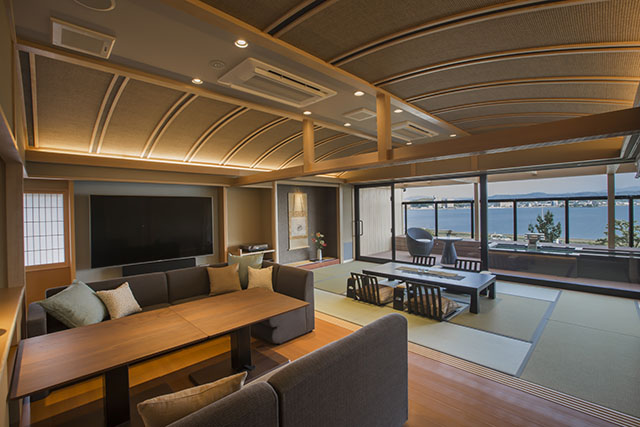
With the design themes of "feeling of a hot spring inn" and "barrier-free", Naniwa Ryokan hot spring inns have been gradually renovated over 14 years. As a result, they have become an advanced example of inclusive design for hot spring inns. In addition, the focus on universal design for customers has created a work environment that is equally friendly for employees working at Naniwa Ryokan Co. inns.
The jury described this entry as:
Attractive and universally designed. Not only barrier-free but a place of relaxation for everyone and an inspirational example of tourism for all. Hot spring spas are of considerable cultural importance in Japan and previously inaccessible to people with any functional limitation. Naniwa Ryokan Co. has worked long and hard to create an inclusive experience, and this is an outstanding example of what can be achieved through persistent and determined commitment to universal design principles and learning from users.




- In the category of Co-Design
- Shibuya City, Kuwasawa Design School and fukufukuplus corporation receive a joint Gold Award for:
The public font data by people with disabilities "shibuyafont"
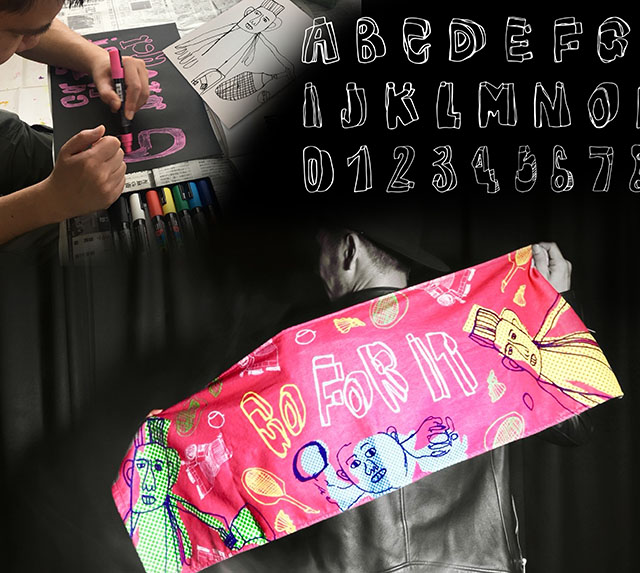
Japanese characters and patterns drawn by people with disabilities are bold, humorous, and attractive. Students at the Kuwasawa Design School, a vocational school in Shibuya, develop these drawings into digitised fonts, symbols and patterns that are made available to individuals and companies. This joint effort of industry, government, academia and welfare, aims to disseminate Shibuya City's philosophy of "diversity and inclusion", and has resulted in widespread adoption by residents and companies. Sales income is used to promote social participation and financial independence for local disabled people.
The jury congratulated the team for:
A delightful, innovative and inspirational initiative that speaks to social inclusion in a positive and life-enhancing way. It has encouraged the active participation of individuals, local people and major companies in challenging stereotypes and celebrating diversity by championing the creative ability of disabled people in a democratic and co-creative manner.



- In the category of Co-Design
- NOSIGNER receives a Gold Award for:
PANDAID
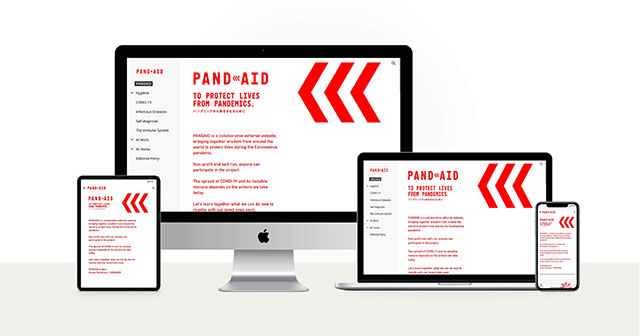
PANDAID is a collaborative editorial website launched during the early days of the COVID-19 crisis with the goal of bringing together wisdom from all over the world. Its aim is to give us all the key information we need to protect ourselves and our loved ones from the pandemic. As a collaborative website it offers a place and an opportunity for people to unite by collectively assembling accurate knowledge of infectious diseases and how we can fight against COVID-19 and similar viruses.
The jury said, thought, considered, observed, commented, etc.…
A collaborative, multi-nation volunteer website with clever, affordable solutions anyone could use to respond to the pandemic. This is timely and important for all. Although its UD features could be more evident, it skillfully deploys the concept of collective intelligence in the design movement to deliver something unique, effective and sympathetic.





- In the category of Education
- FUJITSU LIMITED / Kwansei Gakuin University / NTT DOCOMO, INC. / Okinawa Churashima Foundation / The Nippon Foundation / Yokohama Hakkeijima Inc. / Virtual Ocean Project receive a Gold Award for:
Towards an education that leaves no one behind Distance Learning project using advanced technologies such as 5G, VR and underwater drones
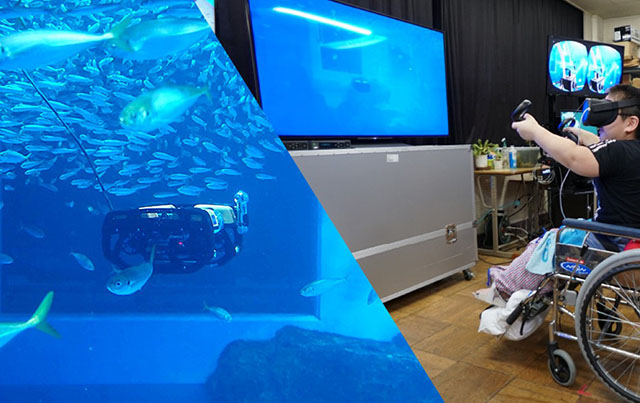
A distance learning project aimed at meeting the United Nations Sustainable Development Goal of ensuring quality education for all. By using advanced high-definition technologies such as 5G, underwater drones and virtual reality Fujitsu has demonstrated the possibility of delivering distance learning to children unable to attend school due to illness and other challenges. By providing experiences that deepen learning about the sea and living things, the project has demonstrated the potential of these technologies to deliver high quality educational content in engaging ways to otherwise excluded children.
The jury saw this project as:
An excellent example of how new technology can enable and empower excluded users.
This is a project Fujitsu has been working on for some time, which has reached a new level of technological integration, and it is delightful to feel the students’ enthusiastic engagement with the system. In the context of COVID-19 it could have some really strong applications – an opportunity to demonstrate how it can be used to go beyond enabling participation and facilitate the integration of disabled children within mainstream education so that they can learn alongside their able-bodied peers.





- In the category of Service Design
- Shekulo Tov Group receives a Gold Award for:
The Integrative Unit Model-Shekulo Tov Group
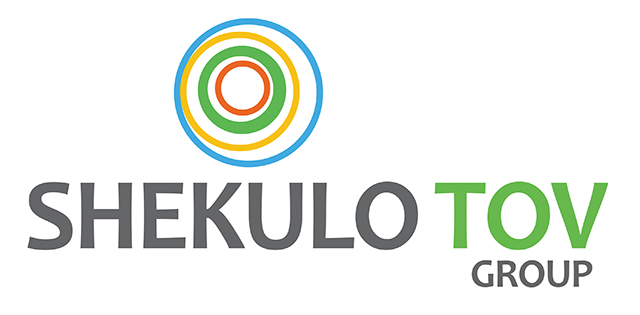
The Shekulo Tov Integrative Model is a thoroughly proven social service for disabled people to help and accompany them into suitable permanent employment. The service is based on a new and advanced approach which bridges the gap between sheltered and supported employment by simultaneously training and placing users in the workplace. This model, which is readily replicable, is designed to offer a unique support system and safety net to service users, who can return as and when needed to receive further support and training.
The jury described this project as:
A remarkable Israeli entrepreneurial hub with a 15-year track record enabling people with disabilities to enter competitive employment. An outstanding and sustainable project that is importantly pushing UD boundaries around employment and neurodiversity, and demonstrating the power of service design for all.



- In the category of Public Space Design
- Design Office Gondola Company receives a Gold Award for:
Toilet as a Place to Relax in the Busy Town Station
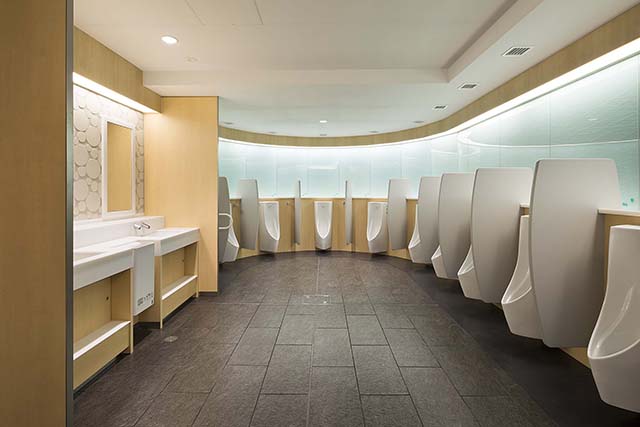
In December 2017, the main toilet inside the west gate of Shinjuku Station was renovated by Design Office Gondola Company. Some 500,000 passengers use Shinjuku Station daily and the designers took into account the multiple issues of the location, usage conditions and function of toilet facilities in a major city station. The design process involved regular user feedback and ensured maintenance staff were involved at all stages. The resulting implementation is conceived on two levels, first in terms of functionality and inclusivity, and second but equally important, as a place to relax away from the noisy crowds. As a consequence a major emphasis is placed on ambience, lighting, layout and detailing to create a uniquely welcoming experience.
The jury observed that:
A lot of empathy and user insights have been applied in this project. Japan leads the world in the design of toilet appliances and this project takes that proven excellence a step further by giving equal weight to ambience and pleasure through a restrained but highly effective universal design.


- In the category of Public Space Design
- Mitsubishi Electric Corporation receives a Gold Award for:
Standard Elevator AXIEZ-LINKs
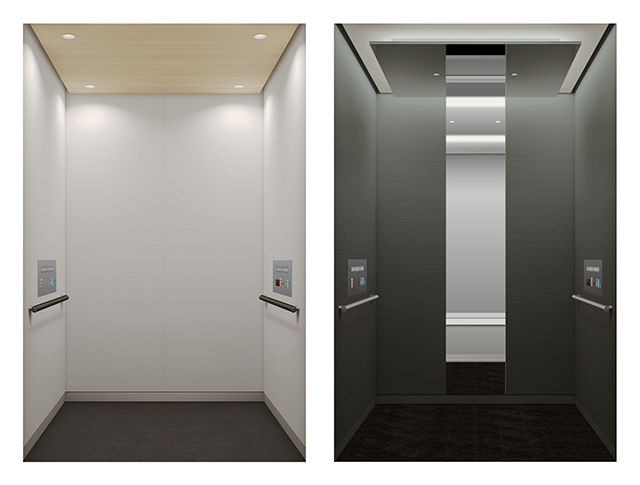
A standard elevator for use in small and medium-size offices, housing complexes, hospitals, and long-term care facilities. This elevator is designed to fit within a wide range of buildings, in order to broaden the uptake of products and service devices incorporating a high level of Universal Design features. The elevator is scheduled to go on sale in December 2020.
The jury described this product as:
An excellent example of Mitsubishi's continued and long-term commitment to user-friendliness through the elegant use of universal design down to the smallest details. For Mitsubishi, Universal Design is an ongoing process of continuous improvement, and it is particularly encouraging to see it emerging as an essential feature of all its new products including this standard small elevator.


- In the category of Work Equipment
- ATOUN Inc. receives a Gold Award for:
Powered Wear ATOUN MODEL Y series
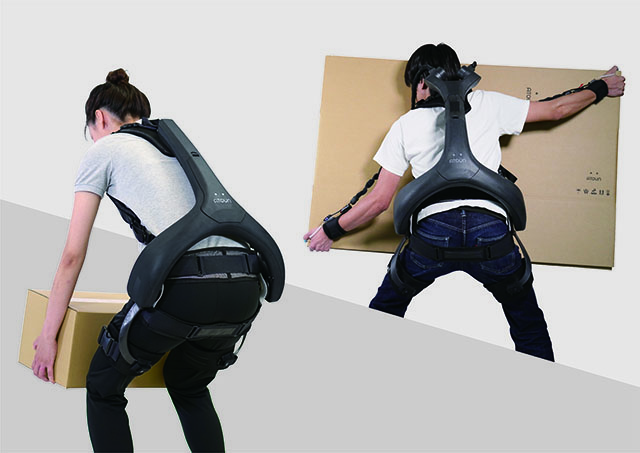
The Model Y series is a wearable robot that alleviates the burden on the waist, lower back, and arm when lifting relatively heavy objects. Powerful motors guided by sensors detect movements in the waist and assist the operative in lifting and moving weighty objects. The ‘Y’series is suitable for light work and is dust and waterproof so usable in a range of work environments indoors and out of doors.
The jury described this project as:
An innovative, semi-robotic, power-assisted work aid with wide applications in the future. Importantly, this product addresses a leading cause of back pain and injury and a significant source of work-related illness and disability. Currently the economic and social consequences of back pain and injury are unacceptably high for workers, for employers and for our health services. This and similar products have the potential to significantly alleviate such well-known problems, while allowing for longer, stress-free working and limiting work-related injuries.





SILVER AWARD 2020
- In the category of Education
- Consortium APF France Handicap & Groupe SEB receive a Silver Award for:
Good Design Playbook
In order to make everyday products accessible to as many people as possible, Groupe SEB and APF France Handicap designed together the Good Design Playbook: an extensive guide to Inclusive Design with good design practice examples for everyday products and services accessible to all.
The jury described this project as:
A good and informative guide to Inclusive Design in French with many diverse users engaged throughout. Universal and Inclusive Design guidebooks are not new, but in the French context this is a much needed and long overdue effort. Importantly it is the outcome of a fruitful collaboration driven by a disability organization.



- In the category of Future Generations
- Vilamuseu (Ajuntament de la Vila Joiosa / Local Council of la Vila Joiosa, Spain) & Néstor F. Marqués - Patrimonio Virtual y Divulgación Cultural receive a Silver Award for:
Augmented accessibility in virtualization and 3D printing of heritage
Augmented accessibility refers to the whole process of improving the accessibility of museum pieces by creating touchable 3D models or replicas for display alongside priceless originals and so ensure their enjoyment and appreciation by as many people as possible. The main objective of the project is to develop a standardized and affordable method in creation and management of accessible 3D collections which until recently were prohibitively expensive and time consuming to produce.
The jury praised this project for:
Establishing a viable and practical method for creating tactile exhibits from a mix of AR and 3D printing from important museum pieces that has been tested and evaluated by appropriate disability organizations. It would be good to see proposals for its application within Universal Design beyond its cultural heritage origins.



- In the category of Social Design
- Mitsubishi Electric Corporation receives a Silver Award for:
MITSUBISHI ELECTRIC Water surface situation Monitoring System ‘MINAMonitor’
'MINAMonitor' is a system that allows users to remotely check the water level in a reservoir via a smartphone and a floating, satellite-enabled buoy. This is important in times of heavy rain, especially as physical checking is onerous and requires considerable travel. The sharing of information combined with email notifications and ready access via a browser ensures that remedial action can be taken before an emergency situation arises.
The jury described the MINAMonitor system as:
An Interesting new technical and inclusive device based on user-centric insights and needs. Particularly noteworthy is the attention given to making it easier for older people to undertake this important job. Another solution to a real problem, seen through the lens of UD, and part of the suite of emergency management innovations coming out of Japan and an important sustainable project.



- In the category of Social Inclusion
- RATTA RATTARR, Challenged Japan Corporation receives a Silver Award for:
Designing for diversity / RATTA RATTARR
We are a designer brand that supports people with mental and physical disabilities to achieve an independent livelihood through creative work. Using the drawings of our creators and a flexible manufacturing system we develop a diverse range of designs and products for commercialization. The resulting products, from stationery to clothing, are sold to support the project and so create a sustainable model for our activities.
The jury considered this project to be:
A beautifully presented and highly committed collaboration between disabled people and talented designers. A reimagining of the sheltered workshop model to deliver inclusive employment and high-quality products and give visibility to disabled people by focusing on their creativity.



- In the category of Public Space Design
- BATLLE I ROIG ARQUITECTURA, SLP receives a Silver Award for:
JOHAN CRUYFF STADIUM
The Johan Cruyff Stadium project for Barcelona FC is part of the proposed expansion of the Joan Gamper training facility. The requirements contemplate the building of a new stadium to host the games of the affiliated, female, and the junior teams. Although this is a relatively small venue, the proposal from Battle I Roig Arquitectura envisages something more ambitions, fulfilling the requirements of a UEFA category III stadium while placing accessibility and inclusivity at the heart of the design.
The jury commented on this design proposal as:
A legendary club, a legendary player, and now a great and complex project based on UD criteria. This large and complex public building proposal demonstrates a wonderful set of inclusive design values in its overall conception and detailing.


- In the category of Public Space Design
- Mitsubishi Electric Corporation receives a Silver Award for:
Terasu Guide
Terasu Guide is simple but sophisticated signage system that can project animated, signs, symbols and information onto floor surfaces, delivering intuitive, easy-to-understand guidance for sighted users of all ages and abilities. It can be used in a wide range of situations, from large public facilities, to smaller buildings and commercial facilities. The signage can be readily controlled, scheduled and edited, either at a distance or on site, making the system highly flexible and responsive to changing requirements.
The jury saw the Terasu Guide as:
An intuitive solution using available technology to make signage more accessible and flexible. Once again, Mitsubishi demonstrates that it understands the potential of UD when it is intelligently integrated into the built environment. Although the system is not groundbreaking it is based on good user research and impressively executed. The push for standardization through the ISO system is to be applauded.


- In the category of Public Space Design
- National Museum of Ethnology / Kyushu University / Yamaguchi University receive a joint Silver Award for:
Digital Tactile Map
The interactive tactile map developed for The National Museum of Ethnology, Suita, Osaka, is a system that allows people with and without visual disabilities to access information without discrimination. The finger guide on the touch panel display encourages the user to touch and explore the map, and by linking this with voice guidance, relevant location and exhibition information are immediately available.
The jury found this entry to be:
A more inclusively designed interactive map, which avoids the barriers inherent in normal touch screens. Japan is late to multi-sensory experiences in museums, which are better developed in other countries, making this excellent effort a genuine step forward in the Japanese context.



- In the category of Public Space Design
- designer Nora Gavare receives a Silver Award for:
Urban community garden _audz_ (grow!)
Community garden _audz_ is a local, small-scale answer to the global climate and social challenges of the 21st century: a place where people can interact, share and acquire knowledge. The intention is to encourage an appreciation of the natural world among city dwellers and foster the value of self-grown food. The central principal is community participation.
The jury described this project as:
A well-realized, inclusive community social project, and an all-round universal and sustainable idea from an enthusiastic and empathic young designer. Inclusive gardens with these features have been a UD story for a long time in a lot of places, but this project may be more innovative in Latvia than in countries with a longer UD history.





- In the category of Communication Design
- DENTSU INC. DENTSU Diversity LAB / Universal Communication Design Association / Tokyo Denki University receive a joint Silver Award for:
Minnano-Pictgram
The Japanese Food Labeling Law requires that specific ingredients for food allergies be listed on packaging. However, in some cases it is difficult for consumers to read and/or recognize ingredients due to problems with text font size and visuals. In response the project team developed a set of food allergy pictograms to enable consumers, and in particular children and foreign visitors, to quickly recognize key ingredients. The whole process was based on Universal Design principles and practice, with iterative user testing and evaluation at its heart.
The jury praised this project for:
Effectively addressing a common problem for many consumers by making complicated things simple and intuitive. This is a big global issue, and Japan's established reputation in pictogram development makes it logical that these become the basis for a global standard.




- In the category of Communication Design
- The National University Corporation of Tsukuba University of Technology (NTUT) receives a Silver Award for:
The Project of Sign Language Guides who are d/Deaf for making Accessible Science Museums.
A training program designed to ensure that people with hearing impairments are able to enjoy and understand the exhibits in science museums (including aquariums, zoos, and botanical gardens). Human interaction is at the heart of the program, which includes training expert personnel able to explain and discuss exhibits in sign language, supplemented with visual explanatory information. It also includes activities to convey the fun of scientific words in sign language to people without hearing impairment and seeks to develop employment opportunities for deaf people.
The jury thought this project:
Addresses an important issue in museums and in an enjoyable and inclusive way. It is an excellent accessibility initiative for science museums and aquaria, in particular in Japan, although such initiatives have become a regular part of accessible programming in other countries.



- In the category of Communication Design
- Starbucks Coffee Japan, Ltd. receives a Silver Award for:
New “signing store” – a place of belonging and realizing potential by embracing diversity and inclusion through sign language
In June 2020 Starbucks Japan opened its first Signing Store in Kunitachi City, Tokyo: a coffee shop where sign language is the order of the day. Symbolizing Starbucks’ commitment to diversity and Inclusion, its aim is to create a place where employees with diverse capabilities work together while staying true to who they are.
The jury applauded:
This inspirational and inclusive version of Starbucks and described it as a welcome story of a major chain making a thoughtful commitment to deaf culture. Although not a groundbreaking initiative it is a significant gesture and the jury noted that there is a similar Starbucks store in Washington DC, near Galluadet University. Where will the next one be?


- In the category of Communication Design
- THE BRAILLE MAINICHI receives a Silver Award for:
The Braille Mainichi coming to its five thousandth issue
The Braille Mainichi is the only braille newspaper in Japan and on July 26th celebrated the publication of issue n° 5,000. The paper was first published in 1922 and has been published continuously ever since, including through the Second World War, ensuring blind readers access to news and in-depth articles.
The jury saluted this achievement as:
Evidence of a decades-long commitment to the vision-impaired community of Japan, and congratulates the Braille Mainichi on almost one hundred years of continuous publication of a Sunday Braille newspaper. This is a truly impressive achievement and a wonderful story, even if with new technology there are fewer people who still prefer a physical newspaper to one on a refreshable Braille display or Braille terminal.



- In the category of Communication Design
- SHISEIDO Co., Ltd. Creative division receives a Silver Award for:
Shiseido's Inclusive Approach to Space Design
The “Arabesque Original Art Exhibition” held as the company’s creative activity and a window display at the employee training facility were presented in a way to invite visitors to experience art through their own senses. These experiments were the embodiment of our spirit of inclusivity expressed in our creativity.
The jury welcomed this exhibition as:
A charming piece of brand-promotion cleverly and inclusively realized. Consideration is given to a diversity of visitors in this multi-sensory exhibit combining an inclusive experience with good access for people with visual limitations.


- In the category of Innovation for Everyday Use and Emergency Situations
- Shimizu Corporation Azusa Sekkei Joint Venture receives a Silver Award for:
KAMISU BOUSAI ARENA / A place that’s ready “just in case” and “always there”
A proposal for a multi-purpose cultural and sports facility that under normal conditions would function as a place of interchange and activities for residents, but during a disaster becomes a response operations base and evacuation center. The intention is that a place for everyday interaction between people will become a refuge where they can work together and help each other in the event of a disaster.
The jury described this proposal as:
A large impressive project with the unusual regional combination of culture, sports and emergency roles in the community. We felt it needed stronger linking to Universal Design criteria and evidence of user-involvement and evaluation before anything becomes real, but saw genuine potential in disaster management.





- In the category of Innovation for Everyday Use and Emergency Situations
- Panasonic Corporation receives a Silver Award for:
Panasonic LED Torch Light
This LED flashlight is easy to use in any situation, whether in everyday life or in an emergency. The compact body makes it comfortable to hold and use, while the octagonal grip stops it from rolling away when put down. The shower-proof construction and hard finish make it robust and suitable for use in any situation, even in the rain.
The jury described this product as:
A simple rethink of an everyday product that is far too often badly designed. By focusing on including children and women Panasonic has delivered a modest product with a high level of UD features. The latest step in Panasonic’s long-term evolution of the ubiquitous torch in the interests of user-friendliness and safety.


- In the category of Housing and Architecture
- Yanniotis & Associates | Architects & Consulting Engineers receives a Silver Award for:
INTERelationships - Universally Designed Sustainable Housing Complex for Supportive & Collective Living along with Public Uses in an Historical Urban Context in Athens
INTERelationships is a design proposal for a sustainable, supported living complex for vulnerable groups of people living in a collective community in an historical urban context in Athens. The rationale behind the proposal is to demonstrate the feasibility of a sustainable dwelling model, based on near-zero energy consumption in use, in the form of a supportive envelope for residents, combining universal design principles, social provision, and an effective resource and facility management framework with a focus on ambience and near-zero waste.
The jury considered this to be a:
Comprehensive, appealing and sustainable UD housing proposal for an innovative residential community in an urban setting. The link to environmental and social sustainability is a big asset, although the whole would be strengthened by clear evidence of user-engagement and evaluation in the proposal development process.


- In the category of Housing Equipment
- Mitsubishi Electric Corporation receives a Silver Award for:
MITSUBISHI ELECTRIC Air Conditioner GE / GV Series
Universal Design principles have been applied from both user and installer perspectives in the design of this air conditioner. The outdoor unit is more compact, easier to carry, and easier to work on in a limited space. Based on interviews with installers, improvements were made to previous designs and new installer-friendly features were introduced to an already user-friendly design.
The jury described the improved design as:
A rare product focused dually on user and installer. Although not groundbreaking the GE/GV series is a welcome evolution of a proven design that shows impressive attention to lightening the workload for installers.

- In the category of Healthcare and Welfare Design
- Stella Medical receives a Silver Award for:
S1 Smart Drill Navigation System for Spine Surgery
The S1 Smart Drill is a user-friendly, small-size navigation system for spinal surgery. The integrated display at the rear of the drill provides the surgeons with real-time visual guidance to help them locate the correct position, angle and depth for an implant directly within their field of view.
The jury said:
This is an excellent example of user-centered medical design, simplifying process and increasing success rate. While it draws on the user-centered methodology of Universal Design its narrow specialist field means it cannot be considered as true UD, but remains worthy of merit.

- In the category of Product Design
- AtoZED di Alain Zanchetta receives a Silver Award for:
Transporta bag. A bag for anyone.
Transporta bag is a stylish, user-friendly bag developed in collaboration with wheelchair users and pedestrians as an accessory for everyday use. Transporta bag combines functionality with aesthetics making it possible for anyone to transport shopping or personal belongings safely and conveniently.
The jury described Transporta bag as:
A fully vetted design for a handsome, practical bag for people who use wheeled mobility and people who don't. While not groundbreaking this is a well-realized and versatile bag for all. It would be a good idea to test the bag with people who use walkers, another important group of potential purchasers.



BRONZE AWARD 2020
REFLECTIONS FROM THE JURY
In 2019, recognizing that the IAUD Awards Program was entering its ninth year the Jury introduced a new set of criteria to better reflect the maturity of Universal and Inclusive Design, to raise expectations and challenge established companies to push the boundaries of UD practice with exciting new products and services. We also hoped to encourage young designers and companies to bring new energy and enthusiasm into the field.
However, we knew that change would not take place overnight and so the Bronze Award category was introduced as a way of rewarding those entries that, although worthy of note, do not sufficiently push the boundaries of Universal and Inclusive Design to qualify for a higher award.
In 2019 and also in 2020 we have also made allowances for those entries that fail to meet our additional requirements of direct engagement with disabled users – of consciously including diverse users in technological innovations; of going beyond conventional 'usability' and by demonstrating a long-term commitment to UD – and of producing honest and informative promotional material. These entries also receive a Bronze Award, but for the future we would like to remind entrants that demonstrating a clear and direct link with Universal and Inclusive Design principles is an essential first requirement for the IAUD Awards Program.
- In the category of Education
- Kanazawa College of Art, Industrial Design Course, Craft Course receives a Bronze Award for:
Co-creating new designs with lead users -A collaboration between design and craft-
The subject of this course element is vessels and cutlery. Five wheelchair users and visually impaired users were invited to join the class and students worked with them to discover their needs and create design models addressing them. By combining students from both the Crafts and the Design departments, skills and knowledge are share in joint projects solving real life problems.
The jury described this course as:
A textbook approach combining students across disciplines to encourage collaborative working and learning through well-established co-design processes resulting in quality design outputs. Interestingly, the results are reminiscent of design solutions from the early days of UD in the UK, three decades ago, proving how well and consistently co-design methods identify key issues and point to solutions.


- In the category of Education
- Franka Emika GmbH receives a Bronze Award for:
Franka Emika Training Platform
In pursuit of their vision and social responsibility to make robotics and AI accessible to everyone, Franka Emika GmbH created an out-of-the-box, ready-to-use training platform that includes, at its core, their industrial robotic system. The product addresses the needs of trainers and trainees, and aims to inspire entire generations of robotics users.
The jury welcomed:
The good intentions behind this project. There is clear potential for the system is to be trialed with people at the edges of the spectrum and further developed in response to their needs, a step that needs to be taken to bring this project in to the realm of Universal Design.



- In the category of Education
- Dr. Francisco Borro Reverendo receives a Bronze Award for:
An inclusive music education model
The main goal of this investigation is explore the feasibility of working with diverse groups that promote cooperative learning as a fundamental pillar of an inclusive musical education. The project extended over a ten-year period, during which evidence was gathered on the relative benefits of different modes of musical learning and participation.
The jury described this entry as:
An interesting and ambitious project on musical education, but felt it would benefit from a comparative exploration, in the international context, of other music schools and performance groups a history of including people with disabilities.



- In the category of Education
- Akademie für Gestaltung und Design des Handwerks, HWK Academy receives a Bronze Award for:
Academy of Design Universal Design as Instruction Subject in State Certified Further Training for Designers in the Crafts
A practice –based training program covering 2 and 3D design across a wide diversity of materials and themes. Students are recruited from a wide spectrum of professional backgrounds including ceramics, metal, stone, glass, textile and wood. They work as interdisciplinary teams, exchanging their material expertise and technical skills in joint projects. A universal design component is included in the curriculum.
The jury described this entry as:
It is encouraging to see yet another example of UD / ID integrated within teaching curricula. Unfortunately only a capability simulation exercise is shown and there is no evidence of the involvement of older or disabled users.


- In the category of Healthcare and Welfare Design
- Glowing Co., Ltd. receives a Bronze Award for:
Medical wig [5Star] that use technology and excellent in design.
Cancer patients in particular are distressed by losing their hair as a side effect of treatments. Glow Wing products address this issue in a life-enhancing way that enhances self-esteem and confidence and can be helpful to recovery. The company has progressively improved its products in response to customer feed-back. An important feature of its "Five Star®" wig is its soft, secure base layer consisting of a cotton knit fabric combined with a special film that adapts to the users head, offering a high level of comfort and security in all situations.
The jury praised Glow Wing for:
The incremental improvement of its products that serve a vulnerable and large sector of the population.


- In the category of Healthcare and Welfare Design
- EMB Leuchten GmbH - Design by Detlef Meier receives a Bronze Award for:
for.me - The intelligent and wireless control-system
"for.me" is a bedside remote control unit for nursing facilities allowing residents to control multiple room features. For example, curtains and doors can be opened and closed or the radio can be activated.
The jury described this entry as:
A good implementation of remote battery and wi-fi-less control of basic functions in care-home situations, and an important timesaver for carers. Unfortunately there is no discussion of user-research and evaluation to mark it out as a universal design solution.


- In the category of Healthcare and Welfare Design
- Batel Plus Corporation / YOSHIDA TSUKASA CO.,LTD. / Misako Dai / Hiroko Murayama receive a Bronze Award for:
Elastic Stockings for Patients [Cool lala]
Cool lala are medical elastic stockings for patients suffering from lymphedema and varicose veins. The product was developed with the intention of helping patients get rid of stuffiness and live a bright and enjoyable life. Fun packaging is part of this attempt to change the perception of support stockings as ugly and stigmatizing.
The jury described this project as:
A long-term research-based collaboration among 4 parties, to develop quality attractive compression stockings. Ultimately a medical product, but with further development, positioning and promotion, one that has the potential to escape from that category.

- In the category of Healthcare and Welfare Design
- Mune Pharmaceutical Co,. Ltd. receives a Bronze Award for:
KOTOBUKI ENEMA HITOOSHI 40
A better enema delivery mechanism based on a simple bulb that is easy to use and more effective in delivering the required dose without wastage. The surface of the insertion nozzle is designed to reduce resistance during insertion, improving user confidence and comfort.
The jury described this entry as:
A user-centered product improvement addressing a relatively unexplored problem to benefit both patients and caregivers.


- In the category of Healthcare and Welfare Design
- Heart Organization Co., Ltd. receives a Bronze Award for:
Skill/knowledge sharing and case discussion platform [e-casebook]
A case review platform where medical specialists share their knowledge and experience to improve treatment outcomes. More than 10,000 doctors worldwide have registered, and it is used for online live surgery, viewing lecture videos, and discussions.
The jury saw in this project:
An excellent concept but with an unclear connection to Universal Design as it is strictly medical and essentially aimed at junior doctors. It would be helpful to hear user feedback and understand why there is little take-up outside Japan.




- In the category of Service Design
- Österreichische Post AG together with KEBA AG receive a Bronze Award for:
Postal Self Service 24/7 for Blind and Partially Sighted Customers
Austrian Post is operates some 430 pick-up-stations with over 80,000 storage compartments where customers can collect their parcels. Austrian Post and its Partner KEBA have completed a facilities design program to ensure that the needs of blind or partially sighted customers are catered for. People with reduced abilities in these areas were included throughout the whole project, from design development to user interface and customer experience validation and final rollout.
The jury described this entry as a:
An ambitious and potentially important project, which the jury hopes will be successful implemented. Unfortunately insufficient information is given to properly evaluate the detail of the service and its current status. It appears to be in the early stages of rollout with final results and uptake up not yet fully clear.



- In the category of Service Design
- Yamaha Corporation, SoundUD Group, Cloud Business Department receives a Bronze Award for:
Remote cheering system ‘Remote Cheerer powered by SoundUD’
A system that allows people enjoying music or sports broadcasts via live television or web-casts to send their encouragement to venues directly. People who want to go to these events but cannot, due to hospitalization, childcare commitments or even because they live far away, can take part through speakers installed at the venue.
The jury described this project as:
Enabling participation of fans and supporters who cannot attend makes this solution appear inclusive. Although outside the field of Universal Design this has potential in the context of COVID-19.



- In the category of Service Design
- FUJITSU LIMITED receives a Bronze Award for:
FUJITSU SYNCDOT GiziNote to support the participation of various people
A conference support system utilizing AI to assist with meeting minutes, with additional features such as: recording, summarizing and simultaneously editing conversations. By automating task selection assigning personnel, and generally managing meeting progress, GiziNote frees participants to concentrate on discussions leading to a more productive work style.
The jury described this entry as:
Although primarily a solution for the mainstream market, this might have serious potential for people with learning disabilities at work and at school but needs more testing and a clearer connection to Universal Design.


- In the category of Service Design
- FUJITSU LIMITED receives a Bronze Award for:
FUJITSU Software Systemwalker Cloud Business Service Management
An AI software suite to improve workplace efficiency and in particular maintenance operations. By using AI technology to search digitize documents and capture the know-how of experienced operatives the system assists beginners new to skilled operations and maximizes the efficiency of skilled workers.
The jury described this entry as:
A product with potential significance, in particular for remote working, but until it has been tested with diverse or atypical users in mind it cannot be considered as UD.


- In the category of Fashion Design
- Joni Studio receives a Bronze Award for:
Child friendly jacket
Joni Studio is a clothing brand founded by fashion designer and mother Marie Albrecht and based in Germany. The company has been developing child friendly fashion since 2017, and all our designs are based on everyday life observations. Its goal is to support and promote children’s independence and individual learning processes.
The jury found in this project:
Some good ideas that could have a wider application. Magnetic fastenings are well established with many variants and applications, including in clothing, and the jury looks forward to Y Joni Studio exploring and developing its ideas in a wider UD context.



- In the category of Fashion Design
- HONESTIES inc. receives a Bronze Award for:
Universal Design T-shirt, with no inside or out, no front and no back.
By removing the distinction between front and back Honesties offer underwear as a universal design. This label-less T-shirt can appeal to busy modern people, simplify life for children, older and disabled people, and prove helpful in care and medical settings.
The jury described this entry as:
A nice idea, essentially a T-shirt with no label, and arrived at with some user consultation. However, the label position is a very useful way of identifying the front, back, inside and outside of many garments, especially for vision impaired users, and in the dark.


- In the category of Product Design
- Mitsubishi Electric Corporation receives a Bronze Award for:
Mitsubishi 4K Recording Television, RA2000 Series
This 4Krecording television, incorporating a built-in hard disk and Blu-ray disc drive, eliminates the complications of setting up and connecting separate devices. Human voice enhancement is helpful to older people, and ease of operation is assured by integrating all remote controls into a signal unit.
The jury saw in this project:
The next step in simplifying and improving TVs for all. Not a groundbreaking idea, but well executed.


- In the category of Product Design
- Fachhochschule Münster / Münster School of Design receive a Bronze Award for:
PANAMA – an aesthetic fixing aid
Panama is a bowl that makes it possible to open any type of vessel with just one hand. This design from three students at Münster School of Design in Germany addresses those situations where it is not possible to use two hands or where the necessary opening strength is lacking. Panama can also be used as a serving dish.
The jury described this project as:
An impressive student project echoing famous designs by Aalto. There is a considerable potential market for this product as it elegantly solves a common problem. Unfortunately there is no discussion of the design / research process followed, or of user consultation.


- In the category of Product Design
- Hari Mouse Co.,Ltd. receives a Bronze Award for:
HariMouse
Conventional scotch tape dispensers involve 3 operational steps, whereas "HariMouse" allows people to apply tape in just one action. As the operation is one-handed people previously unable to use conventional dispensers are no longer excluded.
The jury saw in this project:
A simple tool inspired by industrial tape dispensers that offers an alternative to the irritation and frustration experienced by many people. The jury hopes the success of this product will encourage the company to make a long-term commitment to Universal Design.



- In the category of Product Design
- Sony Corporation / Sony Home Entertainment & Sound Products Inc. receive a Bronze Award for:
Wireless Handy TV Speaker [SRS-LSR200]
The second-generation SRS-LSR200 TV remote wireless speaker offers a nearby sound source for TV audio at clear volumes even from afar. It has an easy-to-turn volume knob, large power button, and other considerations for simple use, plus Sony’s original Voice Zoom, which detects and amplifies the human voice.
The jury described this project as…
Addresses a common design challenge for older people and works with all TVs – a useful idea but not new and with less obviously assistive products competing in the market place.


- In the category of Product Design
- etage8 GmbH receives a Bronze Award for:
Mormor – Aktivmöbel
Our mission is to provide support and security in everyday life, to promote activity and enable independence through well-designed, functional furniture. Etage8 GmbH has a clear and simple goal: to develop sustainable and universal design solutions that last and give pleasure over the years.
The jury described this entry as:
Quality furniture design providing added value and function. Aktivmôbel fills a gap in the market for attractive tables and chairs that can work for multiple generations. Unfortunately, no information is given on research, user-involvement or production and distribution to prove the concept.



- In the category of Product Design
- Art Academy of Latvia, SIA “Hanbirk” receives a Bronze Award for:
"CARTS & SLEDS"
“Sleds must be made in the summer but carts in the winter”, so the saying goes in Riga, Latvia, whereas this design serves as a cart and a sled according to the season. It becomes a multi-purpose assistant for common household tasks, encouraging working together between generations and throughout the year.
The jury described this entry as:
A delightful, culturally driven design solution. We would like to know more about usability by older users and people with functional limitations to properly evaluate this design from a UD perspective.

- In the category of Product Design
- UNIVERSAL DESIGN, JOSEFINA OCAMPO UNIVERSAL DESIGN STUDY receives a Bronze Award for:
LUDIC ELEMENTS FOR CHILDREN WITH AUTISM
The project is based on playful solutions for children with autism. It aims to encourage play and recreation through colorful elements, attractive shapes and sounds. In addition, it encourages games involving two or more participants, fostering exchange and interaction in a playful setting.
The jury observed that:
There are many of toy companies specializing in Autism, however this project from Argentina does seek to encourage children with autism to play with others, which is a positive approach and an interesting area to explore.


- In the category of Product Design
- FUJITSU CLIENT COMPUTING LIMITED / FUJITSU LIMITED receive a Bronze Award for:
A product that provides a large number of customers with a personal computer experience through various operation methods. [FMV ESPRIMO FH Series]
An intelligent desktop computer using voice recognition and other ‘intelligent’ features to simplify the way in which users interact with a PC. Based on a high-definition screen and incorporating face recognition technology the PC acts more like a personal assistant than a conventional PC, but without abandoning the familiarity of a mouse and keyboard interface as an alternative.
The jury saw in this project:
An inclusive and potentially exciting and inclusive implementation of AI. It appears to be a prototype still in development and there is no specific description of user testing. Overall it needs to better demonstrate how it can help people a diverse range of people including those with specific disabilities.



- In the category of Product Design
- Panasonic Corporation receives a Bronze Award for:
FIRST SHAVING SERIES
This is a first electric shaver for boys and girls designed to relieve the anxiety of teenagers as they begin to deal with bodily hair. This body trimmer and face shaver features a gentle shaving action and an attractive color range to offer easy and simple grooming, delivering a new personal care experience for teenagers as they begin adult life.
The jury described this entry as:
An interesting piece of marketing segmentation based on customer insights, and a product that might be valuable for a broader population. However, given the narrow targeting its UD potential is not so evident.



- In the category of Product Design
- Hephata Hessisches Diakoniezentrum e. V. receives a Bronze Award for:
Sausage cutting board "Für Uns"
The sausage cutting board from the Für Uns-Manufaktur is designed to cut the perfect slice of regional cold cut specialties. It can also be used for serving food. Supported by the Institute of Universal Design Munich it has been modified to suit both right-handed and left-handed people.
The jury described this project as:
A good example of an assistive product made by people with disabilities, modified for both left- and right-handed users, but lacking any clear background in research with an appropriate range of functionally-impaired users to establish its effectiveness.


- In the category of Sustainable Design
- Shiseido Co., Ltd. receives a Bronze Award for:
BAUM, a skin and mind care brand based on the concept of coexistence with nature.
A branding initiative that goes beyond conventional market positioning in a genuine effort to address environmental issues by using natural resources in a sustainable way. As an effort to reduce environmental impact, Shiseido’s BAUM range offers refillable product containers manufactured from recycled materials and furniture industry offcuts. Alongside this the company is engaged in forest conservation activities and tree planting.
The jury described this entry as:
A delightful and novel idea based on a co-operation with companies outside the cosmetics industry, highly praiseworthy for its environmental message, but with no clear link to other UD principles. An issue that could be fruitfully addressed by using differences of shape and the contrast between wood and glass to create a tactile link between container and contents to the benefit of vision-impaired users.




- In the category of Communication Design
- University of Tsukuba, Center for Diversity, Accessibility and Career Development receives a Bronze Award for:
Support Information Delivery Service without the Word Disability for People with Developmental Disabilities "Learning Support Book"
The Learning Support Book is a way of providing useful and targeted information to people with developmental disabilities. The service collects and distributes information based on the experiences of people with developmental disabilities and offers information to students on potential coping strategies without using the term "disability". By replacing the word "disability" with the word "needs," any sense of stigma is avoided making the service more user friendly regardless of ability.
The jury saw in this project:
Admirable attention to students with a mix of brain-based functional limitations and an interesting effort to avoid what might be a stigmatizing use of the word "disability". In the future a comparative study of international precedents, of which there are many, would help raise this project to the next level.



- In the category of Housing Equipment
- Fachhochschule Münster / Münster School of Design receive a Bronze Award for:
WAY - An easy way to open doors
WAY is a modern, stylish set of door furniture with easy to use features including a key guide to assist a wide range of people who have difficulty in locating a key in a door and all people in the dark. This student project from Münster Design School in Germany comprises a key guide and matching, easy grip door handles.
The jury described this entry as:
A simple and very versatile device, addressing and solving a common problem. Unfortunately no account of user research, consultation or testing is given.


- In the category of Housing Equipment
- Mitsubishi Electric Home Appliance Corporation / Mitsubishi Electric Corporation receives a Bronze Award for:
Microwave Grill IH Series cooker for supporting double-income households
In recent years, the division of housework in two-income households has become a social issue. In particular, preparing meals in the limited time available is an extremely demanding burden for housewives. This product is the world's first cooker integrating various technologies for the purpose of saving time, preparing healthy food, and enabling easy use by anyone. The aim is to help promote gender equality.
The jury saw in this project:
A device to simplify cooking for all, but may be exclusive for some in terms of costs. A further example of constant product improvement through Mitsubishi’s RakuRaku Assist initiative. The jury fully supported the principle of advancing gender equality by encouraging men to cook, but suggested that in the future Mitsubishi go further by finding innovative ways to encourage them to improve on and take pride in their cooking skills.

- In the category of Housing Equipment
- Émile Perotti receives a Bronze Award for:
Universal Design Socket
A redesign of the standard wall socket system that makes it easier to use. By introducing a simple pin-locating element, the Universal Design Socket ensures safe and barrier-free utilization for all.
The jury described this entry as:
A well-researched demonstration project supported by a realistic user scenario, although certification and adoption could prove expensive and problematic. In addition, the associated changing of plugs on electrical equipment could well introduce another challenge for his key user group. Unfortunately no information is given about user testing as a proof of concept.


- In the category of Housing and Architecture
- Toshiba Corporation / Toshiba Elevator and Building Systems Corporation receive a Bronze Award for:
Destination Control System FLOORNAVI
FLOORNAVI, is an elevator control system that guides passengers to specific cars by letting them specify their destinations while waiting for elevators, so reducing travel time in peak periods and providing a more stress-free experience. The input device is user- and wheelchair friendly.
The jury observed that:
Most global elevator manufacturers have sophisticated control systems, but the innovation here is in the voice function combined with an accessible user-interface sited in the elevator lobby.


- In the category of Housing and Architecture
- Yoshizumi Corporation receives a Bronze Award for:
Approach of the social issues solution [the spread of houses for impaired people]
The goal of this project is to increase the number of group homes for people with disabilities, which are in short supply, and to root the concept of normalization in Hyogo Prefecture, Japan. Promoting places where people with disabilities live happily alongside other residents is an important step towards the more mature society that Yoshizumi Corporation seeks to achieve through this project.
The jury saw in this project:
An excellent initiative in developing group housing for disabled people to help integrate them in society and increase the availability of a form of accommodation that is in short supply. Unfortunately there is no discussion of accessibility, nor clear evidence of accessibility features in the buildings featured.





- In the category of Housing and Architecture
- Hankyu Hanshin Properties Corp. receives a Bronze Award for:
STORAGEA, a new storage space that meets the lifestyle needs of each residents
A home visit interview survey revealed that "storage space is insufficient" and "family clothes etc. are stored in the individual room". The survey also found that many people tended to feel short of hanging storage for clothes. In order to solve these problems, STORAGEA was designed to increase the flexibility of clothing storage, making it more adaptable to changing lifestyles.
The jury found this entry to be:
Japanese urban homes tend to be small, and like all challenges, this has led to better understanding of how to design in adaptability. The result is a clever and adaptable solution to a range of identified storage problems, unfortunately lacking a clear UD perspective and features.


- In the category of Regional Planning
- HOKKAIDO SHUKEI FARMS INC. / TAKENAKA CORPORATION receive a Bronze Award for:
A New Form of Rural Community where Animals and Humans Coexist
A pilot farm and visitor center facility where the general public, and especially children, can learn about the importance of food by observing the process of free-range egg production in operation. The intention is to demonstrate a new and sustainable way of farming where animals and humans can coexist and prosper.
The jury saw in this project:
An important issue and exciting concept with a clear link to sustainability, but no real link to Universal Design. A delightful idea, but the Jury cannot support the idea of having chickens walk in concrete to create the pathway.






- In the category of Public Space Design
- TOK, inc. receives a Bronze Award for:
SRX
SRX is an easy-to-operate multi-use attachment system for connecting components and assembling and disassembling products and equipment. Existing attaching devices can be cumbersome to use and take up unnecessary space. The SRX is designed so that attachment and detachment can be easily achieved in one single light movement without specialist tools.
The jury described this entry as:
A semi-universal attachment device that offers easy of use and convenience. Stealthy UD, but technology- rather than user-led. The information provided is too limited to assess the viability of user testing and use of the product in a mix of scenarios.


CITATIONS for GRAND AWARDS (1)
CITATIONS for GOLD AWARDS (9)
CITATIONS for SILVER AWARDS (19)
CITATIONS for BRONZE AWARDS (35)
Announcement of IAUD International Design Award 2020 Winners





